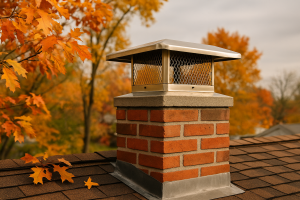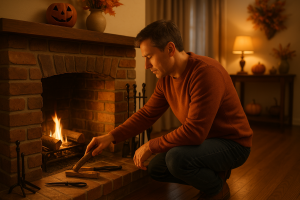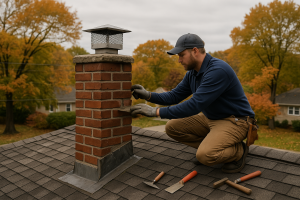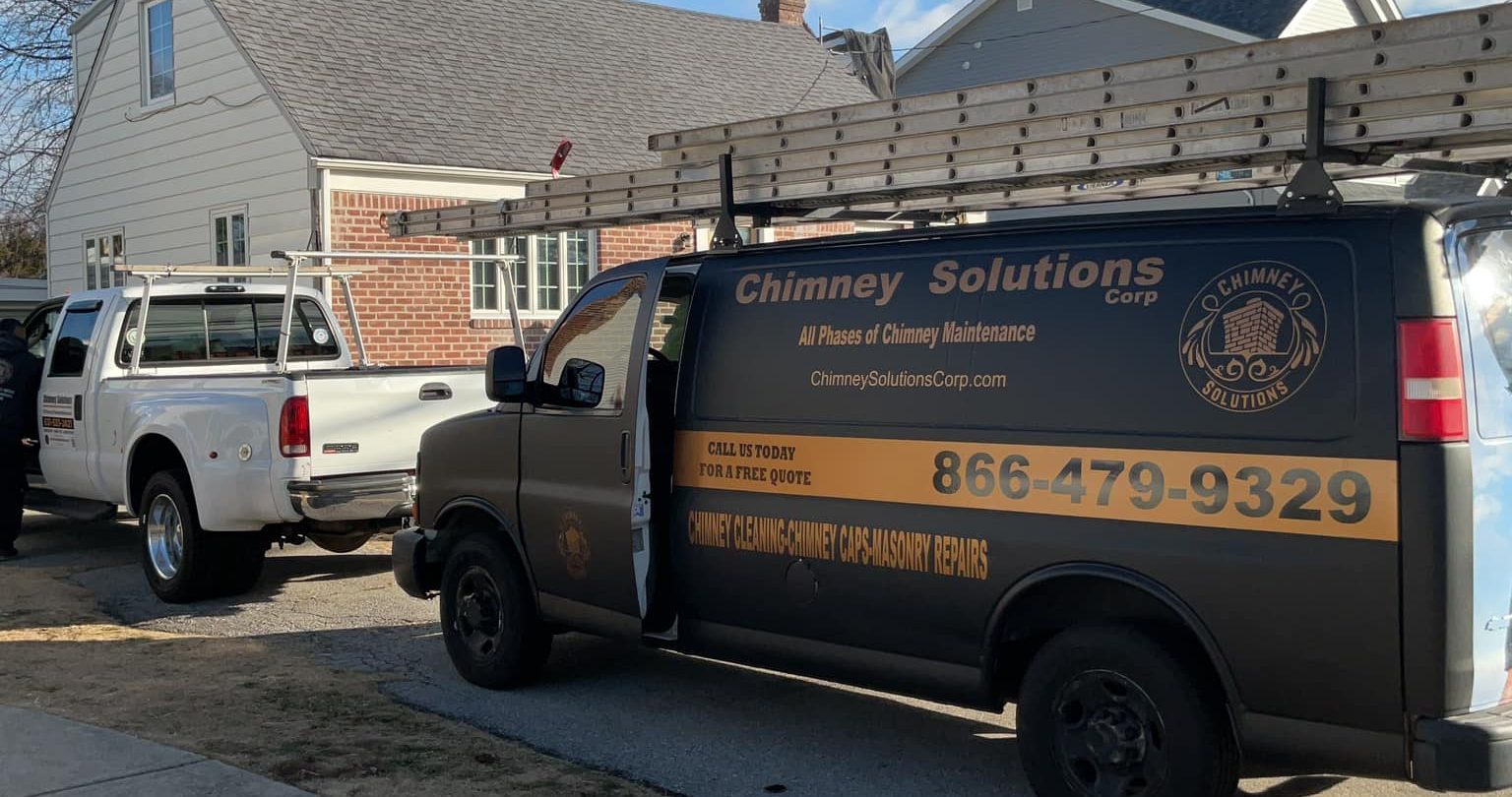How to Choose the Right Chimney Cap for Your Home or Business
Whether you own a cozy home or a commercial property with a fireplace, the chimney cap you choose plays a vital role in preserving your investment. Though it may seem like a minor component, a chimney cap safeguards your chimney system against weather, pests, and structural damage. According to the U.S. Fish & Wildlife Service, installing a chimney cap is crucial to prevent birds and other wildlife from getting trapped inside. In this guide, we’ll walk you through everything you need to know to choose the right chimney cap—from materials and styles to measurements and installation—ensuring your chimney performs safely and efficiently year-round.
Why Chimney Caps Matter
A chimney cap serves as a first line of defense for your chimney system. Installed at the top of your chimney flue or crown, this protective cover helps keep out rain, snow, debris, and animals. It also plays a key role in preventing sparks from escaping the chimney and igniting nearby structures. For homeowners, this means enhanced safety, better energy efficiency, and reduced long-term maintenance costs.
Without a chimney cap, your chimney is exposed to harsh weather and the potential for unwanted guests like squirrels or birds. Moisture can penetrate the chimney system, leading to damage to masonry, flue liners, and even interior ceilings and walls. Over time, these issues can result in costly repairs and safety risks, which makes the installation of a properly fitting chimney cap a smart and necessary investment.
The Benefits of Installing a Chimney Cap
The advantages of a chimney cap go beyond simply keeping rain out. A quality cap also helps prevent wind-induced downdrafts, which can cause smoke and carbon monoxide to enter your living spaces. Caps with spark arrestors add another layer of safety, reducing the risk of stray embers escaping and potentially igniting a fire on your roof or nearby brush.
Animal intrusion is another major concern—chimney caps with mesh sides effectively block birds, raccoons, and other critters from nesting inside. Beyond safety, caps also improve overall chimney performance. By maintaining proper airflow and shielding against environmental threats, chimney caps contribute to the longevity of your system and the comfort of your home.
Types of Chimney Caps
There are several types of chimney caps, each designed for specific chimney configurations and performance needs. The most common are single-flue and multi-flue caps. Single-flue caps cover one individual flue tile and are ideal for smaller chimneys. Multi-flue caps are designed to protect two or more flues with a single cover, often spanning the entire chimney crown.
Specialty caps are also available for factory-built, air-cooled, or triple-wall systems, and these are often required to meet building codes and maintain manufacturer warranties. The type of chimney you have—whether it’s masonry, metal, or prefab—will help determine the type of cap that’s appropriate for your structure. For unique or non-standard chimneys, custom chimney caps may be necessary to ensure a secure and effective fit.
Choosing the Right Material for Your Chimney Cap
Material selection plays a major role in a cap’s performance and longevity. The most common materials include stainless steel, copper, galvanized steel, and aluminum. Each material has its pros and cons, depending on your climate, budget, and aesthetic preferences.
Stainless steel chimney caps are widely regarded for their durability, corrosion resistance, and low maintenance. They’re an excellent choice for homes in wet or coastal regions, offering long-term protection without the need for frequent replacement.
Copper chimney caps are popular for their timeless appearance and patina that develops over time. While they’re more expensive, their visual appeal makes them a standout feature on historic homes and high-end properties.
Galvanized steel offers a more affordable option but is prone to rusting over time, especially in wet or salty environments. Aluminum caps are lightweight and budget-friendly, though they may not hold up as well under extreme weather conditions.
HY-C’s guide on metal chimney caps details the pros and cons of various materials, including stainless steel, galvanized steel, and copper
How to Measure Your Chimney for a Cap
Getting the right fit is essential to avoid problems like poor draft, leaks, or looseness. To properly size a chimney cap, measure the outside dimensions of your flue tile or chimney crown. If you’re installing a multi-flue cap, be sure to include measurements for length, width, and height of the entire top surface of the chimney.
You’ll also want to identify the type of flue you have—such as single-wall, double-wall, or air-cooled chimney pipes—because that determines how the cap will attach and function. Using a chimney cap guide or consulting with a professional installer ensures accurate sizing and a secure fit.
Matching Style and Architecture
While functionality comes first, your chimney cap can also enhance your property’s visual appeal. There’s a wide variety of styles to choose from, including sleek stainless steel caps for modern homes, rustic copper caps for traditional architecture, and custom-designed options for businesses or historic buildings.
Architectural details like roof pitch, brick color, and chimney height can influence your decision. A well-chosen cap blends with your property’s exterior and can even become a feature that adds charm to your rooftop profile.
DIY Installation vs. Professional Assistance
Installing a chimney cap might seem like a straightforward task, but it can become complicated depending on your roof’s pitch, flue type, and chimney condition. DIY installation is possible for handy homeowners, but it requires careful measurement, proper tools, and safe access to the roof.
Hiring a professional chimney installer offers several advantages. Professionals can identify any structural issues, recommend the right cap model, and ensure a watertight seal. They’ll also have the proper equipment and experience to handle multi-flue chimney caps or air-cooled chimneys that require specific fitting techniques.
Maintaining Your Chimney Cap
Like any part of your chimney system, the cap needs regular maintenance to function at its best. Over time, debris, soot, and weather can cause damage or blockages. Routine inspection helps you spot signs of wear like corrosion, loosened mesh, or missing screws.
Annual cleanings during your regular chimney service appointment are usually sufficient. A qualified chimney sweep will inspect the cap, clean it, and recommend repairs or replacement if needed. Keeping your chimney cap in top shape not only extends its life but also maintains your chimney’s optimal performance.
When It’s Time to Replace Your Chimney Cap
If your current chimney cap is showing signs of rust, warping, or has come loose from the crown, it may be time for a replacement. Other indicators include increased animal activity in the chimney, visible moisture damage, or frequent downdrafts.
Replacing a cap isn’t just about restoring appearance—it’s about restoring chimney safety, draft efficiency, and protecting against carbon monoxide exposure and water intrusion. A new, well-fitting cap ensures continued protection for your home or business.
Making the Smart Choice
Selecting the right chimney cap doesn’t have to be overwhelming. Start by identifying your chimney type, measuring your flue or crown accurately, and choosing a material that fits your local weather conditions and maintenance preferences. Consider both aesthetics and long-term performance when selecting the style and material of your cap.
Consulting with a chimney professional like Chimney Solutions guarantees you get expert advice, professional-grade materials, and a long-lasting solution that delivers peace of mind.
Final Thoughts: The Right Cap Makes All the Difference
While often overlooked, the chimney cap is a critical component of your chimney system. It prevents moisture damage, improves indoor air quality, blocks animals, and enhances overall chimney performance. Whether you choose a stainless steel, copper, or custom cap, investing in the right product ensures you get the best return in terms of safety, efficiency, and longevity.
To schedule an inspection or cap installation, call Chimney Solutions today at 866-446-0427.
🔗 For chimney safety standards, visit the Chimney Safety Institute of America (CSIA).



